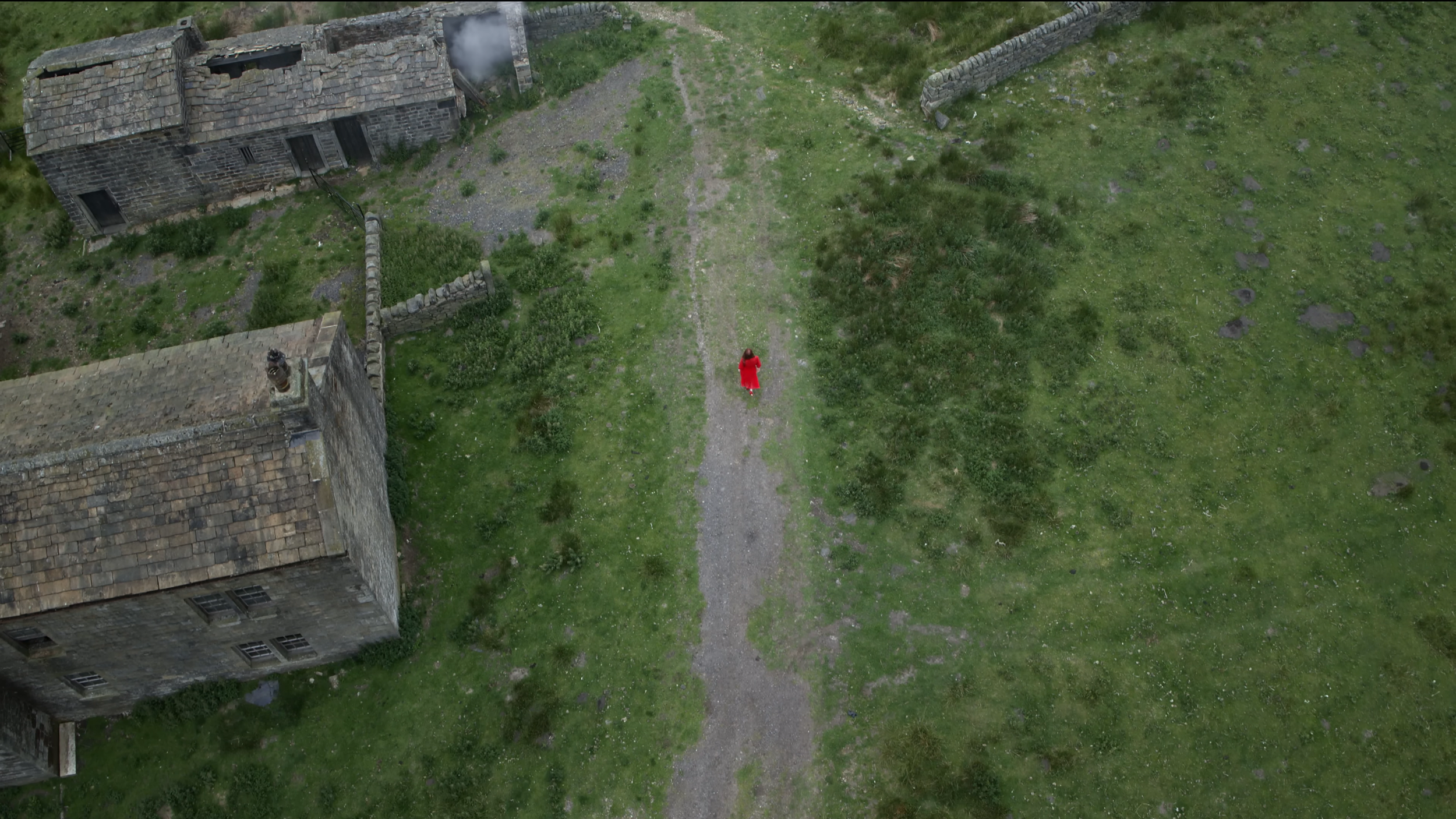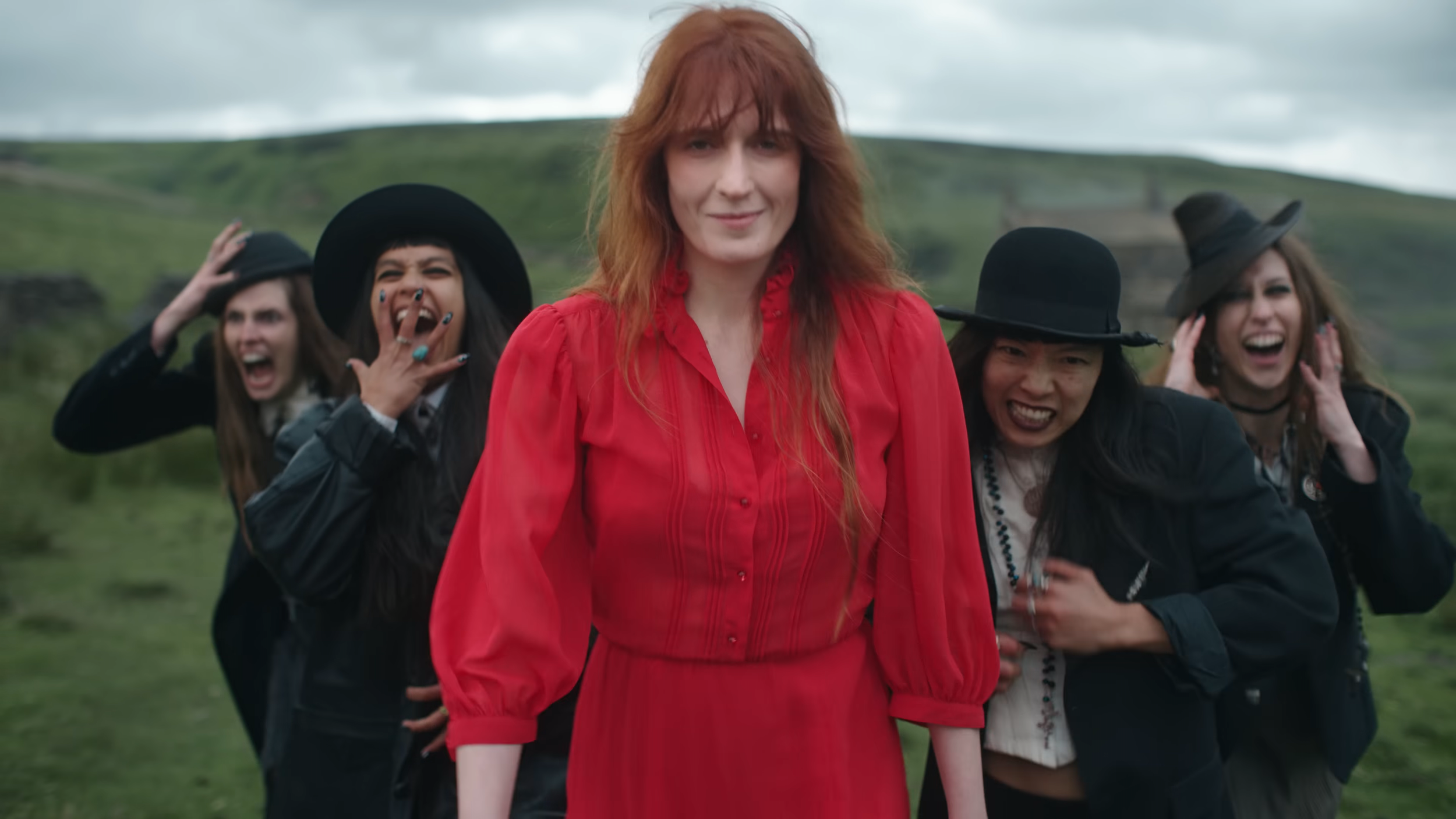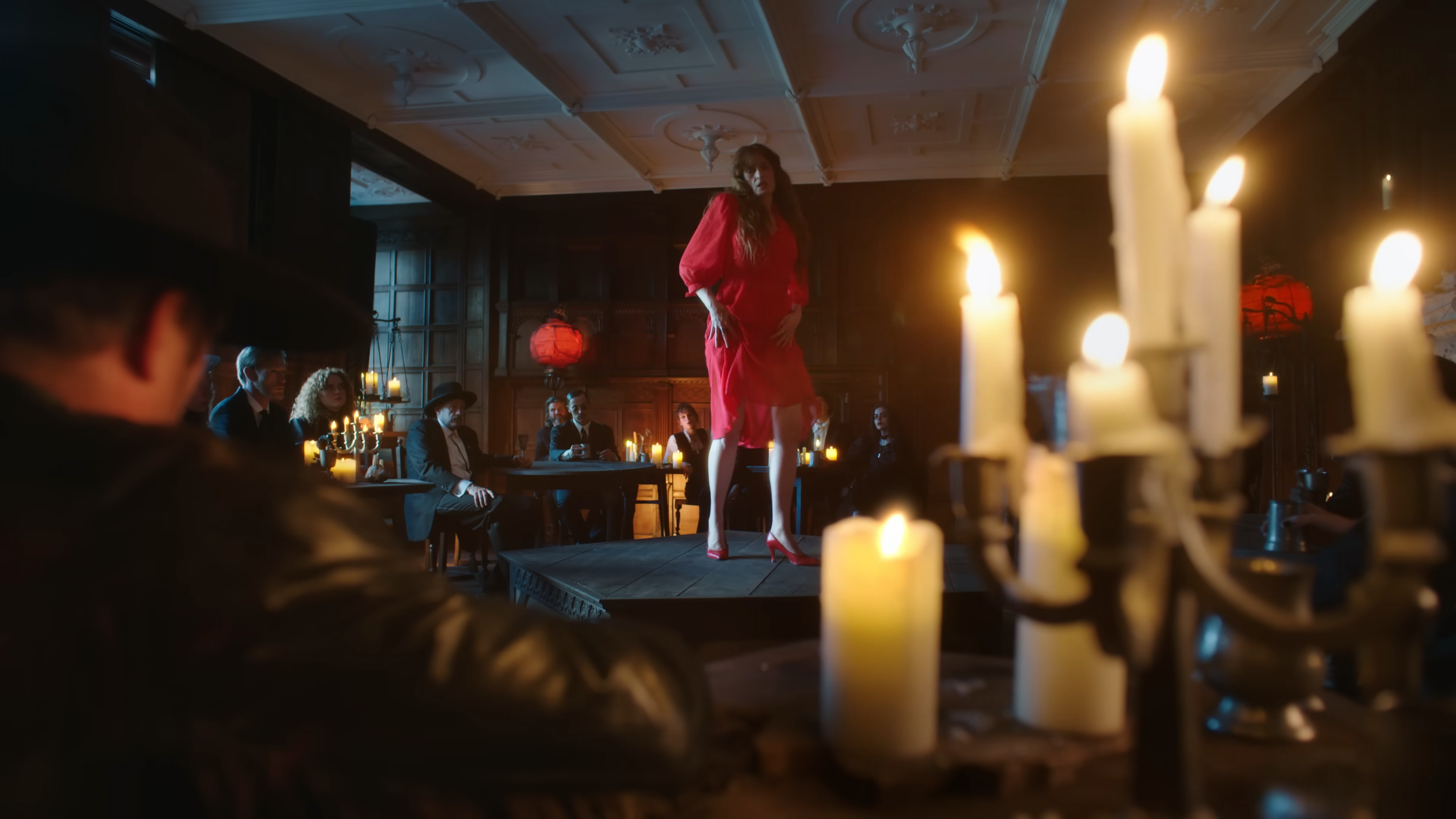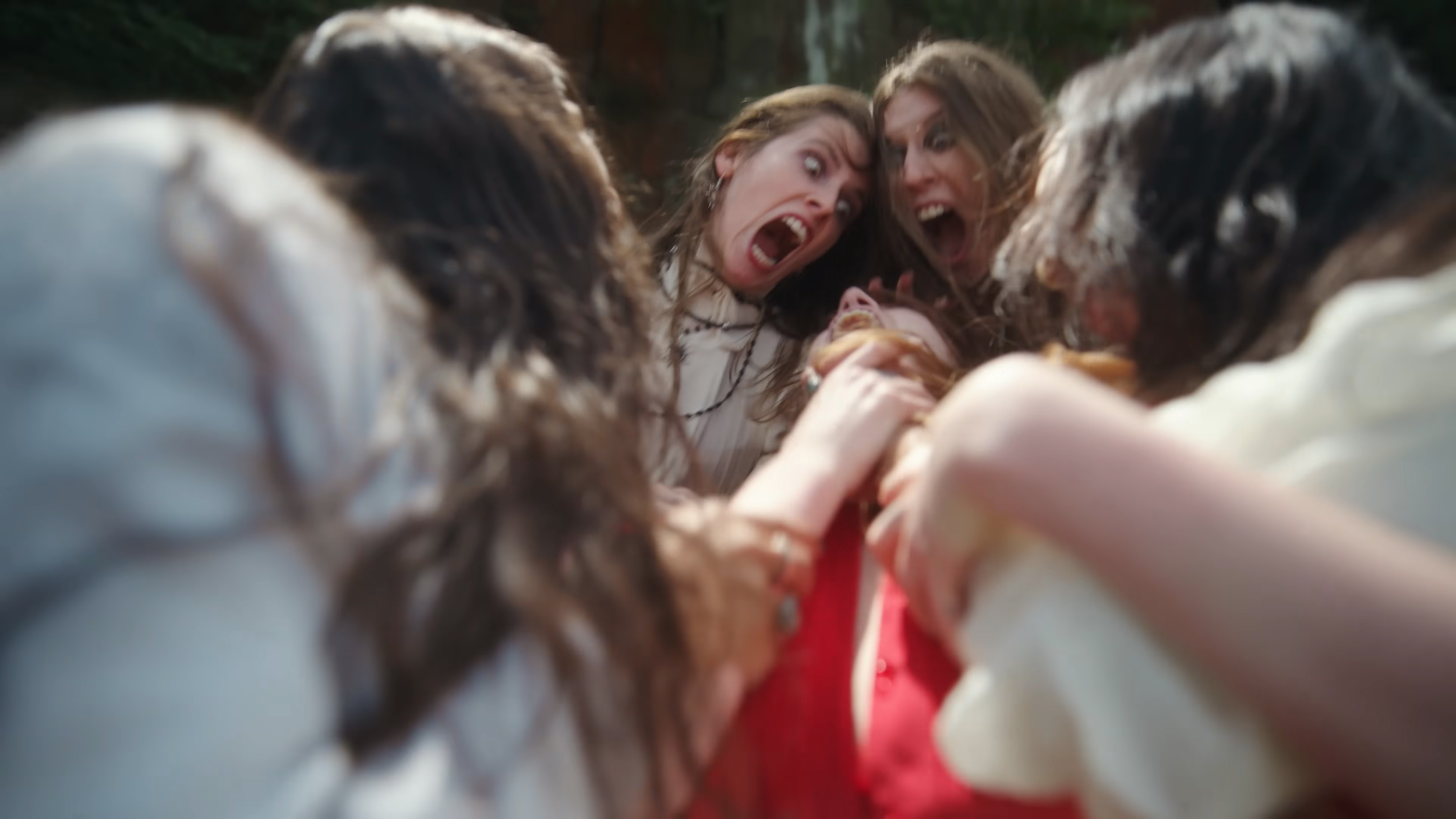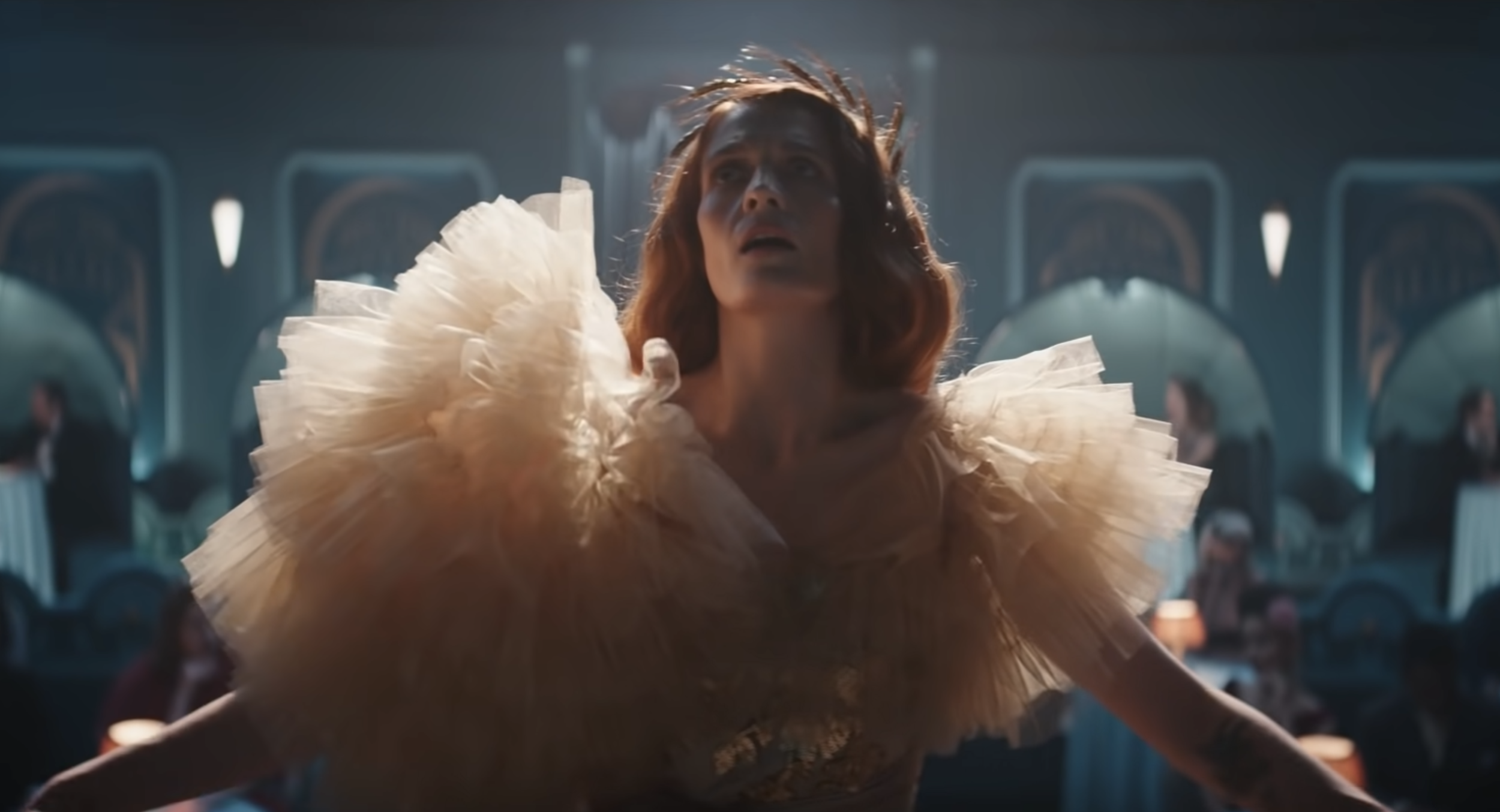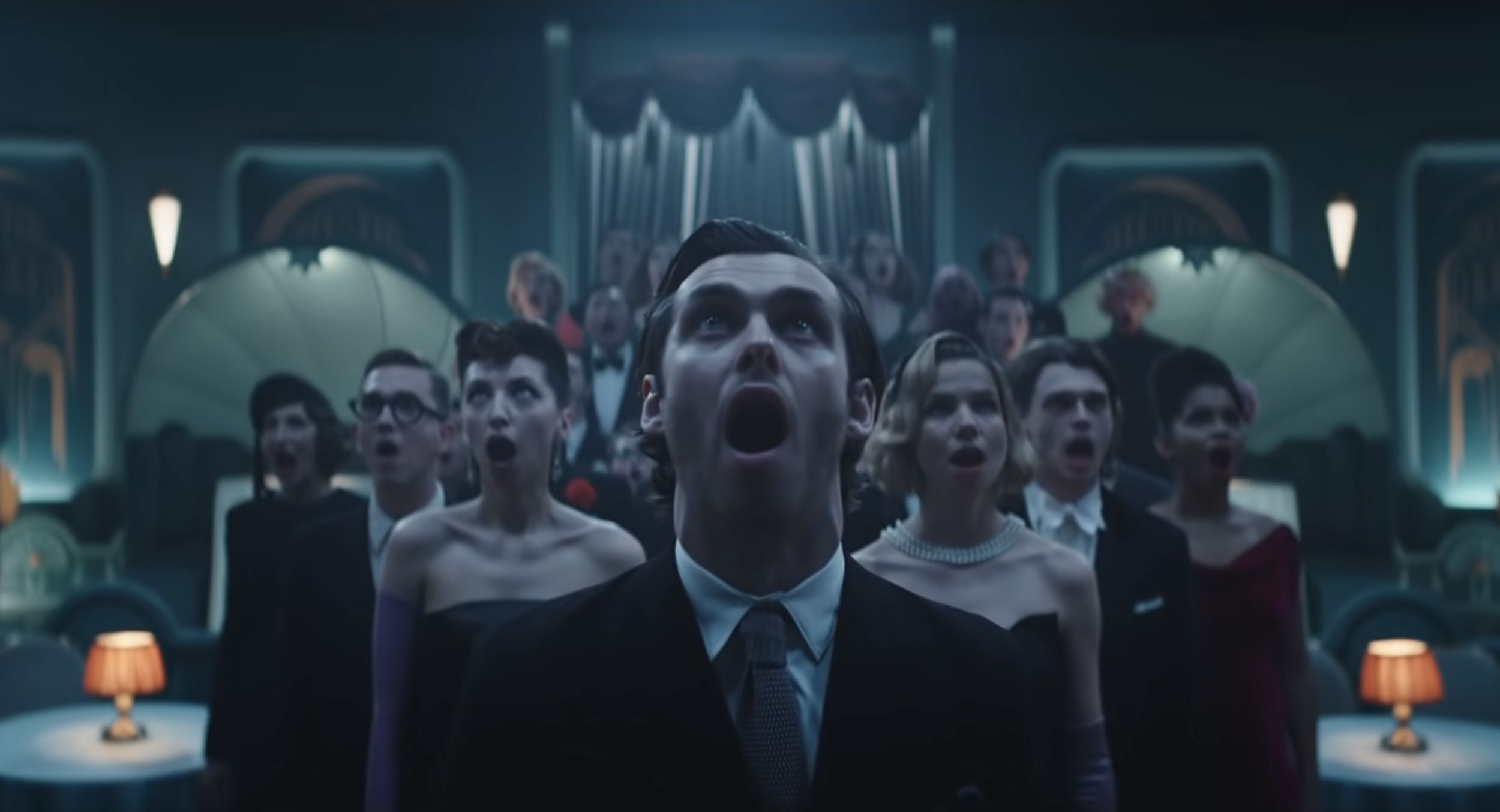
THE LATEST UPDATES
Take a look below for all the latest news, features, interviews, photos and more
Everybody Scream - music video analysis
Everybody Scream - what a video! In our almost ritualistic fashion, here’s our interpretation of the video for your perusal, as we try to unpick some of the creative processes and analyse deeper beyond what are simply stunning visuals and colours. Feel free to comment your own thoughts too!
The video begins with Florence wandering a barren land alone. It’s vast, scary, daunting and very raw. This symbolises her day-to-day life outside of her career. There’s a well-trodden path. Perhaps this symbolises the ‘path of life’; one walked many times, although somehow it still feels aimless. In her bold red dress, Florence stands out against the green landscape. In the tension between the pull of being a performer and the pull of wanting to live a quiet life out of the public eye, Florence feels alone, strange, and a lack of belonging in the world.
The shot cuts to Florence standing in a room, opulent and structured. She’s waving her arms; conducting. She’s at home here. It appears she is practising - preparing for a show. In contrast, the red dress is something that adds to the performance in this context, rather than something that makes her stand out. It highlights the duality of her image in day-to-day life, and as a performer on stage.
Florence is back to navigating the vast landscape alone. A man rides a horse in the distance along the same track Florence is following. Perhaps this is a symbolism for a multitude of things: a patriarchy, carving out a life for a woman who feels she does not conform yet is obliged to follow; a representation of always feeling behind when others charge ahead (she is on foot, after all). The man sits straddling the horse in the wrong direction, adding to the feeling of unease and wrongness of the dynamic. Perhaps the person carving out Florence’s life is doing so under the illusion that they know what is best for her future, but in fact hypocritically, they cannot even face it themselves.
Suddenly, Florence unleashes her support: a coven of witches - her songs, artistry, performance - that continues to guide her and give her newfound power beyond what she is able to reach in the day-to-day. They cast spells of illusion and influence. Her expression turns from one of unease to confidence, and her stride becomes such too: she is taking back power, using her artistry. It’s unhinged, feral, untamed, but that’s exactly what lends her the upper hand. The authority strikes a match and immediately extinguishes it. Again, this can be interpreted in many ways. Fire and ignition can signify the start of a spell. The fact it is blown out immediately could highlight the ways people in her life attempt to blow out the flame in her artistry, thus removing her power. It could also signify loss of something she almost had - a relationship, a project, or anything else she desires but feels out of reach.
The next shot shows burning candles. Florence has taken control in a room (the stage) where she feels most powerful. Here, she has the authority. The candles are lit and the fire-fuelled spell she is casting over her audience is very much in full flow. They are possessed by her energy as she and her songs command the audience to move, scream, shake. Note their positions - Florence and her coven are all mounted on some sort of stage, and everyone else is subordinate to this. Her power is visceral - running her hands from legs to her head to embody the way her energy flows in performance towards her mouth (singing) and out into the venue.
The man who was riding the horse is also here, and he does not look impressed. He is yet to be taken by the spell; the patriarch resisting the pull of her influence, always present and attempting to bring Florence back down to earth in a place where performance allows her to fly. She physically commands him, pushing him down and mounting him, exerting her femininity to remove his power. In her mouth, she holds purple pansies; associated with reflection, thought, and admiration. She showers these on him from her mouth. Metaphorically speaking, she is singing songs that spill from her mouth to command admiration from those who might otherwise not do so.
The scene cuts outdoors again into the vast landscape - a symbolism of the real world away from her career. A new stage is set here. The tone shifts - Florence is no longer in power. She is isolated. She attempts to use what she has learnt on stage but it does not work. Instead, her creativity and art act as a restraint, suffocating her. What had previously been at her side in aid - her art - in fact has damaged (see Florence cutting her foot on stage, breaking her foot twice during performances, sacrificing relationships, and previously self-destructing through partying and substances).
Florence has often talked of her art as a double-edged sword. On one hand it is a space for her to become someone she otherwise could not; to transcend her being. She is larger than life on stage, mythical, and becomes someone sometimes she cannot even recognise within her ferocious performances. But on the stage of life, this very creativity holds her back, reiterating the tension that she explored on ‘Dance Fever’ of being torn between living in aspiration of what women are told they should want (see ‘King’, ‘Dream Girl Evil’), and living as a performer where life often is on pause. This video underscores that dichotomy: her art offers her power, command and freedom on one hand, but suffocates on the other.
And those are our thoughts! What do you think? Let us know on our social channels or in the comments.
FAN ANALYSES
“Autumn loves to put Florence in red (see the Free music video). I see parallels to the classic Kate Bush music video for Wuthering Heights. Also, the fan event “The most Wuthering Heights day ever” has been around for a while, where Kate Bush fans gather in parks while wearing dreamy red dresses and dance to the song.” — Julia Dickinson
“My first impression was the striking contrast between the lush green landscape and the deep crimson of the dress and heels. The red immediately evokes layered symbolism: echoes of The Scarlet Letter, where red signifies both shame and defiance, and The Handmaid’s Tale, where it represents fertility, control, and the blood of conception. In religious art, a red dress often stands for sacrifice, martyrdom, and the blood of Christ. Together, the imagery suggests a powerful tension; between oppression and resilience, between being marked and choosing to wear the mark as a form of strength. Put together, the imagery to me suggests a she’s standing apart from her environment, cloaked in sacrifice, power, and the burden of expectation. The crimson makes her impossible to ignore, she’s either being marked (by society/religion) or she’s claiming that mark as her own.” — Kate OBrien
“Red in witchcraft often symbolizes passion, strength, lust, action, and new beginnings as well.” — Markie Spears Hebert
“There’s also a moment where she pulls a man to the stage, throws him down, and shoves her heel down his throat. It’s a powerful symbol of establishing her dominance over what patriarchy wants and says she should be” — Alanna Seymore
“The horse at the start of the music video seems to mirror Macbeth's arrival at the start of the play and the relation between man on the horse in the music video and Florence seems to mirror Macbeth and lady Macbeth. The witches are also interesting in Florence's music video they seem to be causing mania (much like the plot of Macbeth) and similarly nearer the end of the music video cause mania around Florence. (Lady Macbeth goes crazy at the end of the play).” — @izzywiz.jpg
“I think its worth looking to primary sources of historic witchcraft, of Old England, and Early Modern English architecture and fashion, which dominates this video. The shooting location is a famous English house of Royalists that was besieged by Cromwellian Parliamentarian forces during the English Civil War - while i doubt that was a conscious choice, it is worthwhile to note that the Royalists are associated more with kingship, divine right, romanticism and "the old ways" of feudalism. The Cromwellians were Puritans, Protestants, democratic and viscously modern, and loved killing witches. This is the house - https://en.wikipedia.org/wiki/Wythenshawe_Hall Meanwhile, the outdoors are on the Pennines, well known for their treasury of folklore, of boggarts and witches and ghosts. The two locations are also both Northern English locations, swinging away from London, New York and LA that we saw in the preceding albums - a move to the high moors of the North.” — @_ciotog
My Love - Music Video Analysis
Take a read on our thoughts around the ‘My Love’ music video - a dance song about the effects of COVID-19 and Florence’s music writing process.
This analysis piece comes after the epic release of Florence + the Machine’s second teaser single ‘Heaven Is Here’, followed closely by the lead single ‘My Love’.
For some context, ‘My Love’ is a song about writer’s block that Florence was experiencing prior to the COVID-19 pandemic, and then how the pandemic itself forced Florence into a state of isolation from both her music in her professional life, and from seeing her loved one in her personal life. This is reflected through Autumn De Wilde’s masterpiece music video, detailed below.
The video begins in a pre-pandemic scenario, with a still but intense few seconds of Florence breathing. This is a theme that runs through all of the videos so far. This may be used to symbolise intimacy and vulnerability, as well as isolation and aloneness, all of which are concepts that COVID-19 amplified in 2020.
Florence appears fearful, with back to her audience, almost as if she does not want to perform. She contorts her hands as if controlled by string; as if she is a puppet to the musical world. This reiterates the line from ‘King’ “dragged me by my hair and back on with the show”. Florence realises that she doesn’t have a choice - the show must go on. Notice that when Florence turns to face the audience, her composure and persona completely changes. Suddenly, her face is one of confidence, standing elegantly and commanding the stage. This scene may be to reflect that behind closed doors, just as highlighted in ‘King’, Florence feels vulnerable and fearful, but being on stage is a moment of catharsis, and also where she must display confidence to the world. Her band and audience sit motionless, like wax-work figures (just as in ‘King’). This may be to highlight that her subjects of writing (her music, her friends and her partner) are models; lifeless topics of interest about which she observes, reduce to lifeless beings, and writes about. It could also be that, as she meanders between these people, she is trying to decide where to put her love, but her inability to decide means she feels disconnected from them.
Then, suddenly, the audience is standing, gasping. This is the start of the COVID-19 pandemic, where the world watched in shock as events unfolded. Florence is panicking, trying to navigate the situation but she cannot gain control.
Florence is left alone now that the audience have been isolated from her, instead surrounded by her ‘lace children’ - her inner thoughts, demons, and support. They dance frantically around her as her thoughts race and panic. One by one, they succumb to the effects of her isolation, collapsing as they do, until Florence no longer has any to support her, and she too collapses.
What is left as a broken version of herself, attempting to navigate the situation in the dark; alone and isolated. She rises again, but as a changed person. We hear the breathing once again to highlight her aloneness and vulnerability, except this time it is away from the performance and the stage.
Also of note, and as pointed out by one of our admins Ariel, Florence’s dress deconstructs and thus becomes less extravagent as the ‘show’ proceeds. This is possibly a reference to her becoming more and more vulnerable (Florence has previously stated that she used clothes to hide her insecurities), and also how COVID-19 stripped her usual freedoms and outlets, including that of fashion.
What are your thoughts? We’d love to hear them below! We’re still trying to work out the significance of the young man, seen first in the King video and now helping her climb down from the stage and facing the other way from everyone else in the gasping scene. Let us know what you think.
KING - Music video analysis
Our take on the meaning behind Florence + the Machine’s music video to King, directed by Autumn De Wilde.
As with most Florence + the Machine music videos, the hidden meanings can be dark, covert and cleverly peppered with meaning. In extension of our music video analysis from previous eras, here’s our take on the new ‘King’ music video from the band’s yet-titled fifth album.
To set the scene, Florence released a statement that the song itself is about the torn identities she feels between being a female wanting to start a family, and being a performer. She stated that gender was not something she had previously considered, until reaching her 30s and suddenly coming to the realisation that male performers didn’t have to consider this aspect of their lives as readily as female counterparts.
The video begins with her partner appearing frustrated, mirroring the opening line of having an argument about whether to have children. Florence looks on eerily, observing the situation. Her partner appears fearful of her retaliation against his thoughts, and even more so when her own power in the situation haunts him. At first, Florence appears almost angelic, bathed in light, as she confronts her partner on these tricky topics. However, in an attempt to prioritise her artistic life from her private one, Florence lures him and then kills the bond between the two, symbolised by breaking the neck of her partner. Note that the light changes from bright and optimistic, to dark. This has several points of significance. Firstly, associations between kings and beheadings is rife throughout history. Secondly, this moment shocks the viewer intentionally, as it may have shocked Florence during her realisation that her two identities were not compatible. Thirdly, in killing the male, Florence attempts to fully embrace her feminine identity (note, in contrast to the How Big era where Florence openly modelled her image on male performers). The change in setting may represent reality versus imagination, as well as perceived good versus destruction.
However, despite the killing of this male dominance/identity, Florence continues to drag it around. Her back is turned, but it weighs her down. Florence summons femininity from within, and surrounds herself with this (the female dancers). She levitates throughout, asserting her position as transcending her identity. Notice that when not tied to her male identity or her personal life, and embracing her female identity, Florence is grounded - free - bounding amongst them from outside the confines of the walls she was previously trapped within at the start of the video, into the vast outside world. The contrast of the stereotypically feminine colours and outfits is stark compared with the brutalist decaying concrete structures that they are set against, further highlighting the division between her two identities.
The video concludes by showing performers levitating along with her. Note the performers are all male, whilst her female support remains grounded. This may symbolise the physical division between her male and female identities, with Florence deciding when to ground with the female or rise to the male. However, it might also show that her performance identity is literally put on hold (suspended) because of the tensions she faces between embodying the normalised female role in society, and being a performer in a male-centric career. If she is active at the feminine level, the male (performer) level must freeze and vice versa.
In the end, Florence realises that she cannot artificially separate these identities from each other. Instead, she embraces her personal life and masculine identity and becomes one with this. However, this may also represent how her personal life helps feed her artistic one, as she literally appears to eat her partner.
As ever, we want to hear your thoughts! Please leave them in the comments and let’s get a discussion going!
The Odyssey (Florence + the Machine) - Full Analysis
The Odyssey
Florence + the Machine
The Full Analysis
This is our final analysis from the How Big, How Blue, How Beautiful era; the full ‘The Odyssey’ film. We won’t be going into depth as we’ve done that already in previous analyses; this is an overview of the full cohesive film, although we do go into depth for ‘Third Eye’ as it is the newest and yet to receive an analysis.
“Between a crucifix and the Hollywood sign we decided to get hurt”. Florence has mentioned many times that How Big, How Blue, How Beautiful was the first song she wrote for this album, but also the last that she finished. It was the song that began Florence’s ordeal, and the opening scene to the Odyssey reflects that. A slow zoom into the crucifix that looms over the whole Odyssey (and LA) highlights the start of the descent into chaos, but also an isolating calm that Florence experienced during her year break.
CHAPTER 1 - WHAT KIND OF MAN
Everything is rosy: Florence is driving in a car with her boyfriend, when suddenly, the car-crash happens. This is the start of Florence’s destructive year. The What Kind of Man sequence plays, which provides the feeling of sudden chaos that Florence is thrown into with this relationship. The storm of a relationship that will turn her life upside-down looms (in the air on the balcony - a nod to ‘Various Storm and Saints’ - and on the TV). She’s trying hard to fight the men that haunt her; that pull her down. It’s futile. She’s never had this experience before so she remains weak compared to this coming storm.
CHAPTER 2 - HOW BIG HOW BLUE HOW BEAUTIFUL
Florence crawls out of the car-crash. She’s lost; she’s knocked down. She wonders in the street looking for somewhere to go, and instead finds herself led to the bridge that forces her to cross from freedom to purgatory, under the guise of the crucifix. She’s decided to get hurt.
CHAPTER 3 - ST JUDE
Set in Mexico, this is no longer reality. This video jumps inside Florence’s head and soul, looking from the inside, hence the back-dated 1950s look and different setting. The storm that the meteorologists and that Florence saw coming on the balcony has arrived, and it has soaked her. She’s fragile; she can only be supported by her boyfriend at this point. The car crash has also caused a split to become apparent in Florence; on one hand she’s strong enough to walk by herself, and to see all this pain, but on the other, she physically sees her lifeless self being carried by her boyfriend, and is powerless to stop it. She wonders around, lost.
CHAPTER 4 - SHIP TO WRECK
Back to reality, looking at Florence from the outside again. Florence has come from LA to London, just as she did on her year off. The two sides to Florence diverge even further. One half wants calm, the other is destructive. They are at odds with one another, fighting for different things, and hence fighting each other. Florence goes from on the floor in her bedroom, and ends up back in the same spot at the end, symbolising the repetitive nature of destruction that she just could not stop.
CHAPTER 5 & 6 - QUEEN OF PEACE / LONG AND LOST
We jump back to inside Florence’s mind. This time, it’s set in Scotland; Florence’s ancestral home, when they were younger. These videos mirror the youth within Florence wanting peace and calm, but is unable to establish it because everything around her is not allowing it. It also highlights how her family and friends are trying to protect her from this man that is destroying her, but she’s blind to it. Eventually, they pull her away and force her to leave him behind. It destroys her.
CHAPTER 7 - MOTHER
Back to real-life, Florence is trapped on this bridge still. Notice that this time, she’s physically imprisoned on it; she can reach out to freedom (the hole in the fencing), but she can’t quite get it. She’s told by her friend to leave, and she tells him she wants to stay. Her friend knows this can’t happen though: she can’t live in purgatory her whole life.
CHAPTER 8 - DELILAH
Florence realises that it’s time to leave, or at least try. Throughout this video, she’s supported by those around her that help her leave. The man who told her to leave even offers to have his hair cut to give her the strength to do so, just as Delilah cuts Samson’s powerful hair in the biblical story. Together, her friends help her finally see that the other side to Florence is simply not her. They help her escape, and by the end of the video, she’s finally reached freedom, surfing on top of the car. This is ironic, considering her problems started with a car-crash. She’s learnt to control and make sense of the car-crash, and now she’s literally above it.
CHAPTER 9 - THIRD EYE (full analysis)
Florence has finally managed to burn away her problems; burn the storm within which she was trapped. This directly mirrors the hurricane symbol in “St Jude”, and the lyric “now there’s a few things we have to burn”. She’s finally managed exactly that, highlighting the full-circle that Florence has completed on this Odyssey. Instead of being passed on from man to man as in “What Kind of Man”, the man carrying Florence puts her down and leaves her. Florence is finally able to stand by herself. The men still surround her, but she’s able to lead them. They follow her this time, rather than her being carried by them. She’s able to walk through the purgatory of men carrying the weight of their stones/sins. She is no longer that person. The men around her come back, and try to bring her down, but with her saviours looking on, she is not strong and experienced enough to know how to control them. Through dance, she overcomes her torments. Florence said this herself, stating that within her year off, dance was her anchor whilst she was out at sea. The music fades, and Rob Ackroyd appears, showing us that Florence has truly come full-circle. Her band support her back onto stage, and she finally appears on stage. This is the final and ultimate level of freedom. Singing these songs that describe such an isolating time in her life to millions of people is literally the highest level of projection/freedom anyone can achieve. She’s returned to where she belongs; she’s returned to her true whole self.

